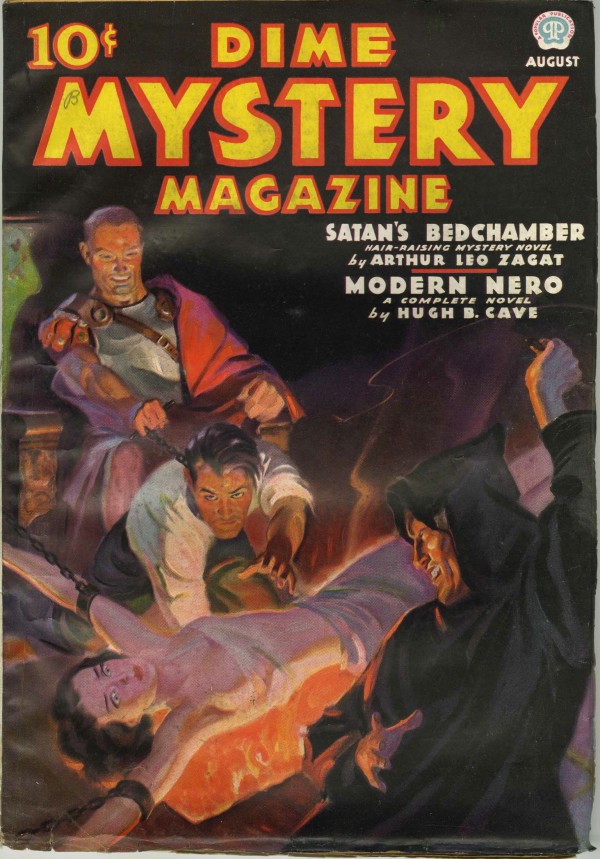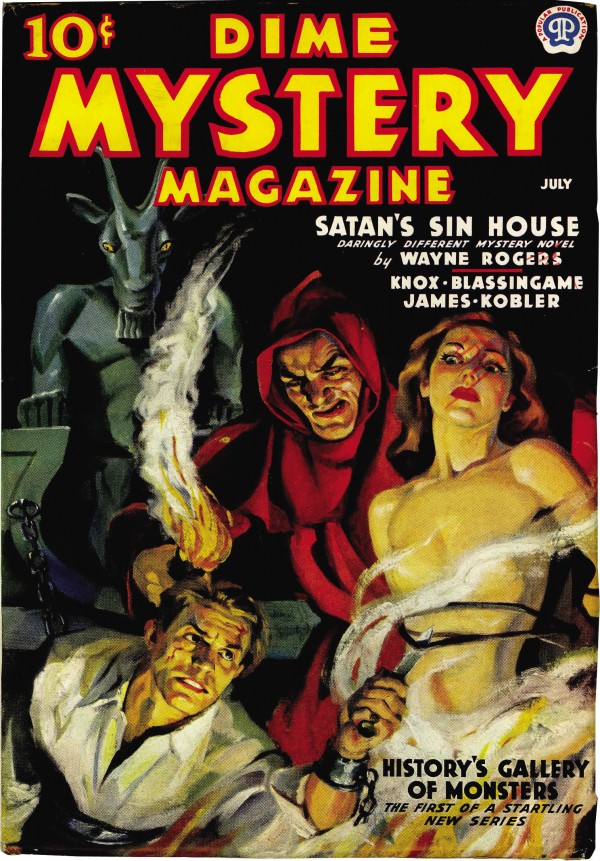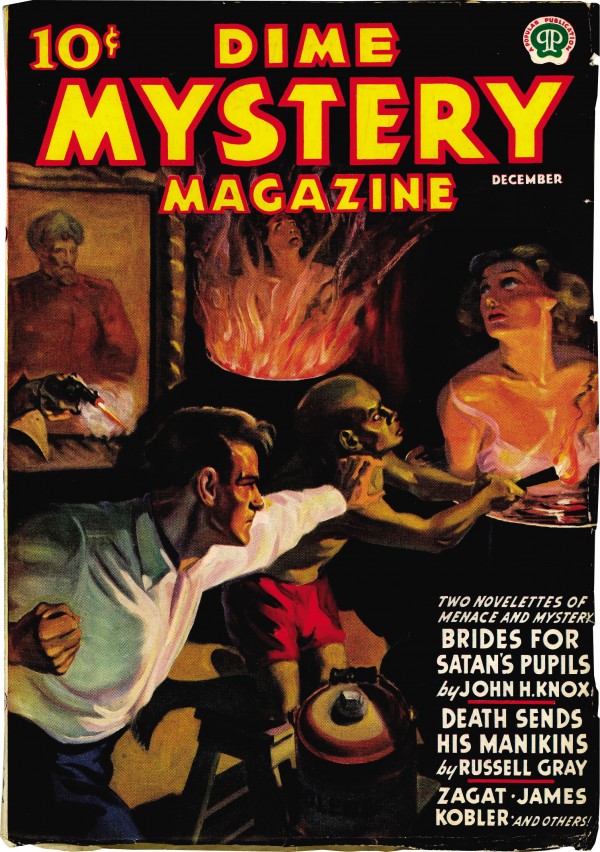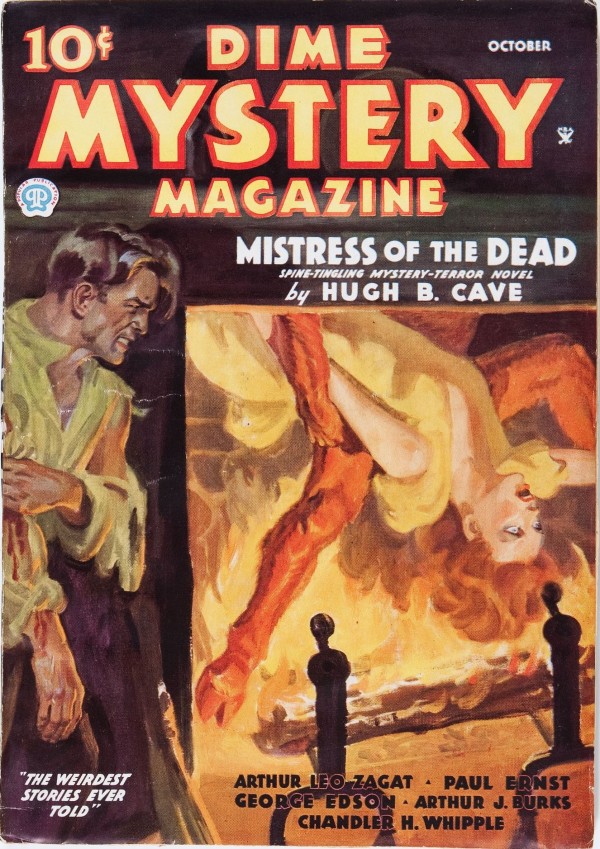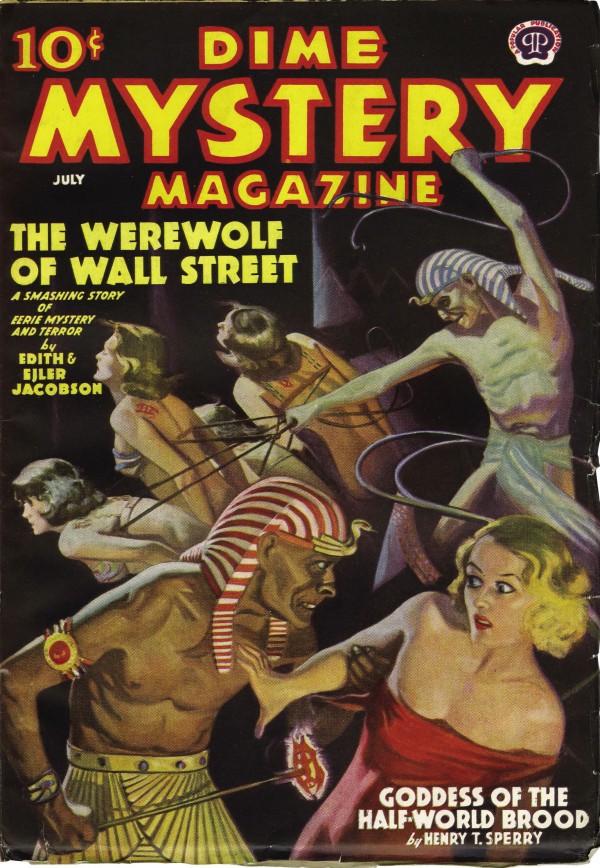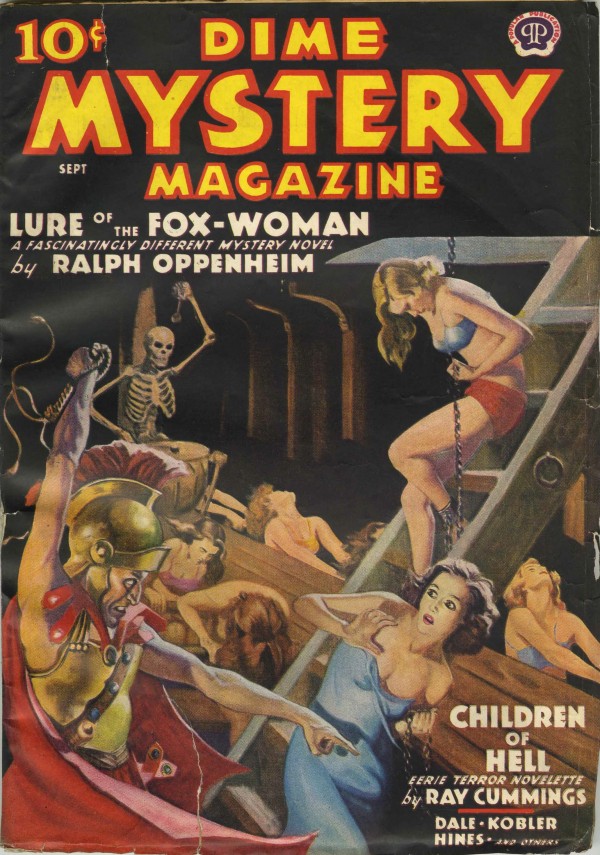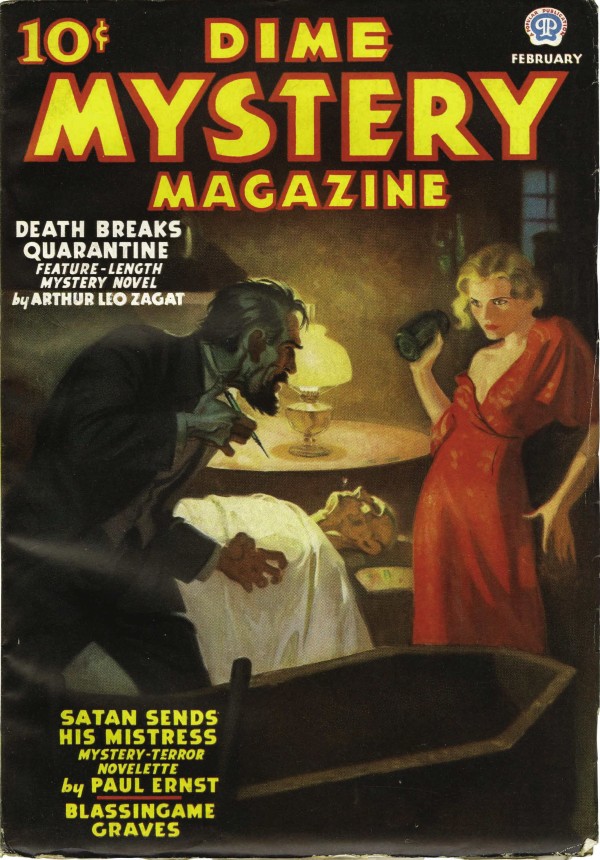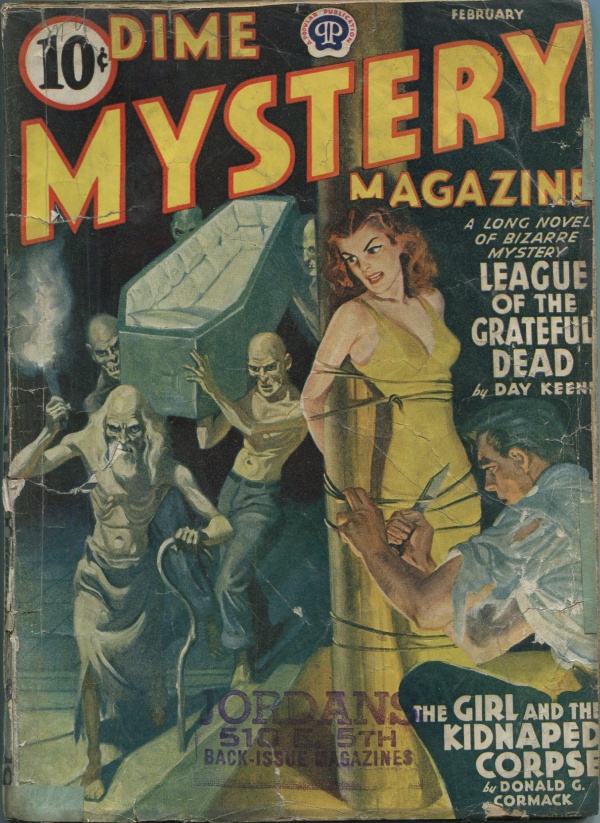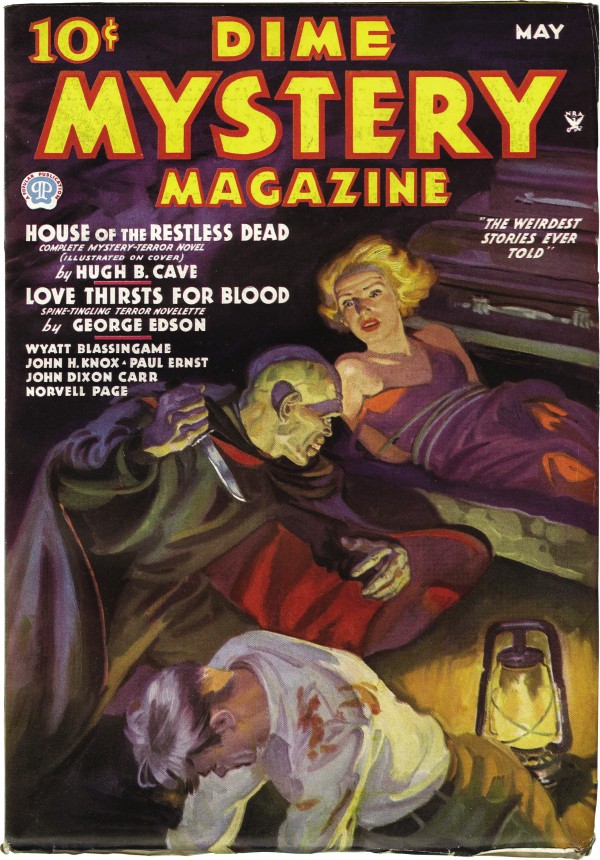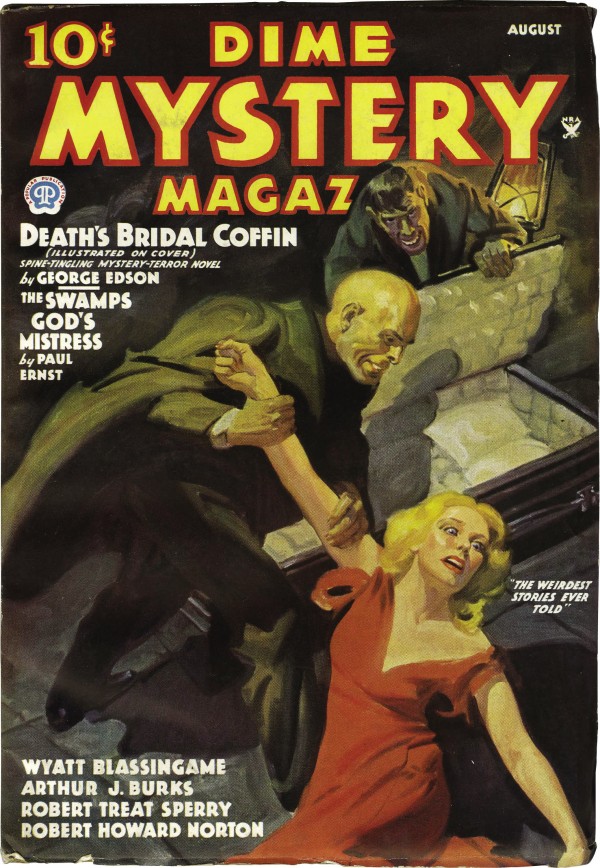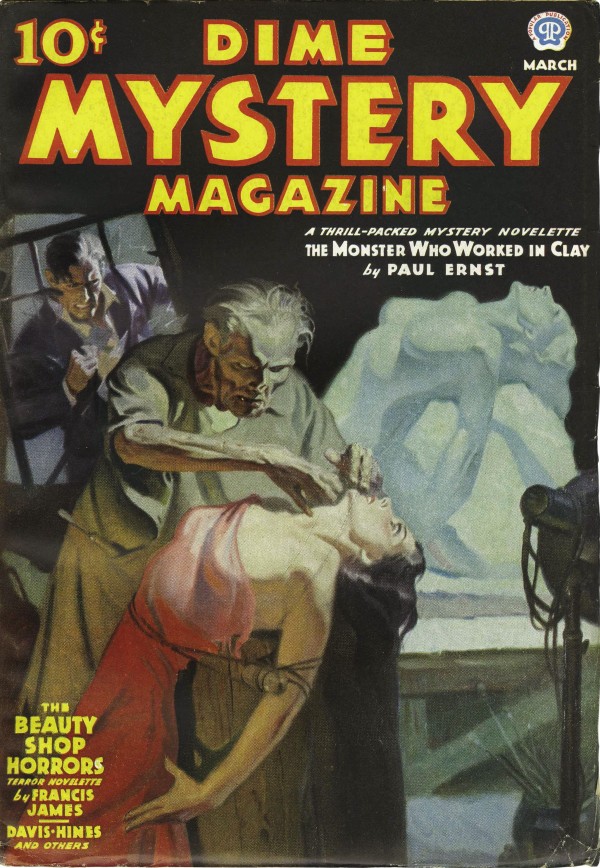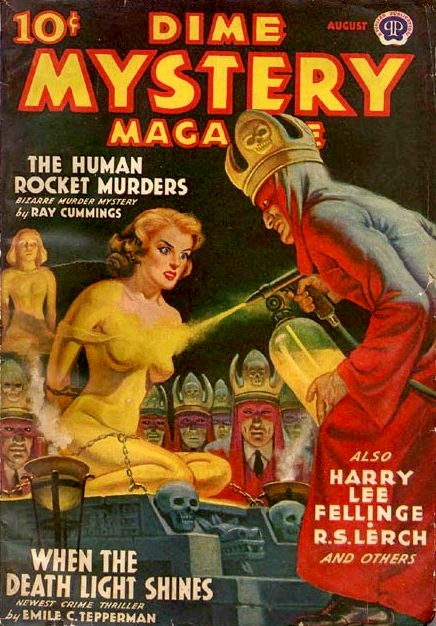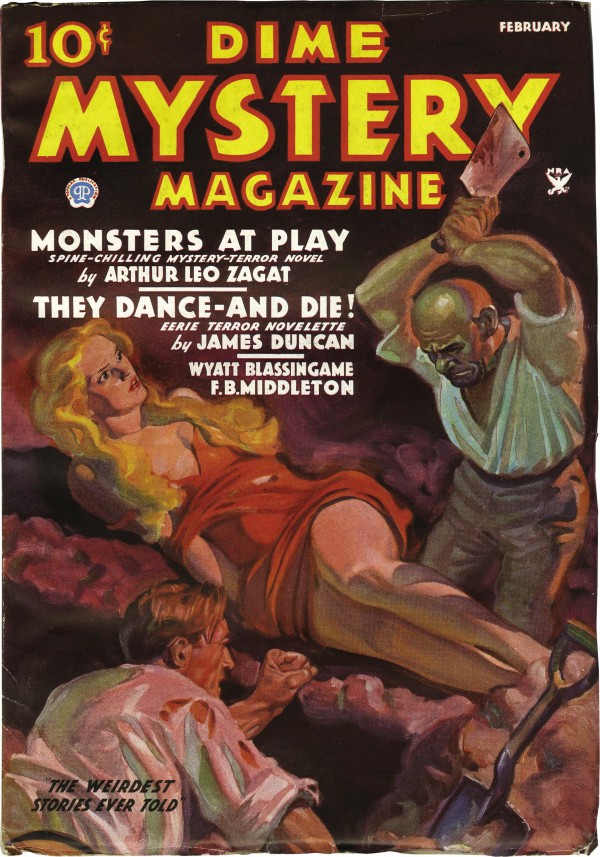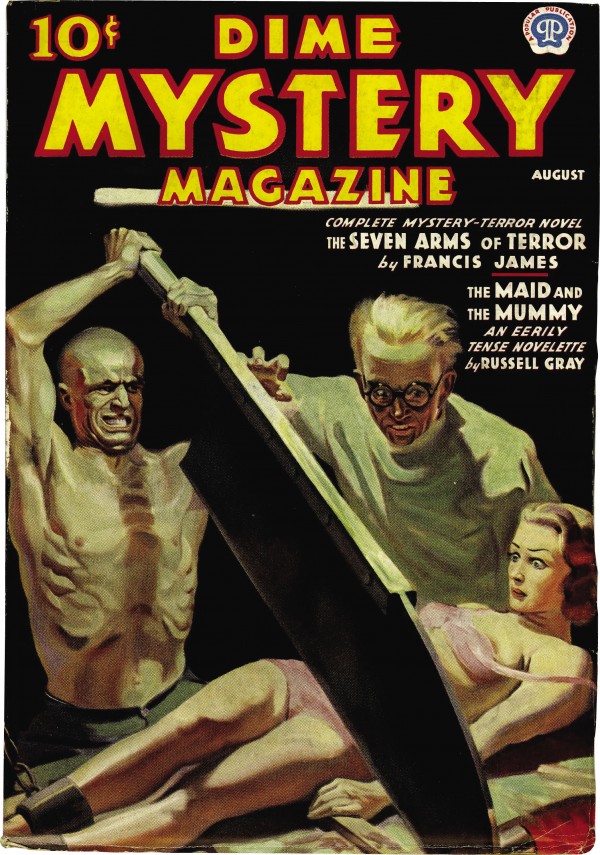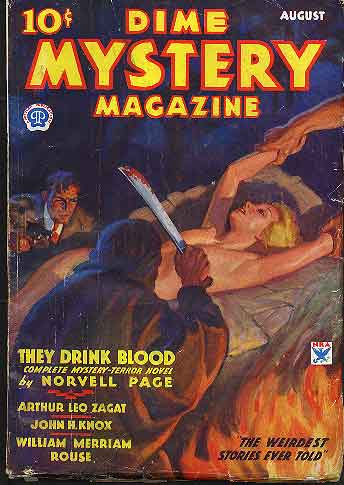More horrible burning, but in this version of the meme, our pretty woman is in the process or on the brink of being put in the flames. One might be lowered into the flames by cultists, as in this April 1935 cover by Walter M. Baumhofer… (issue ISFDB entry here)
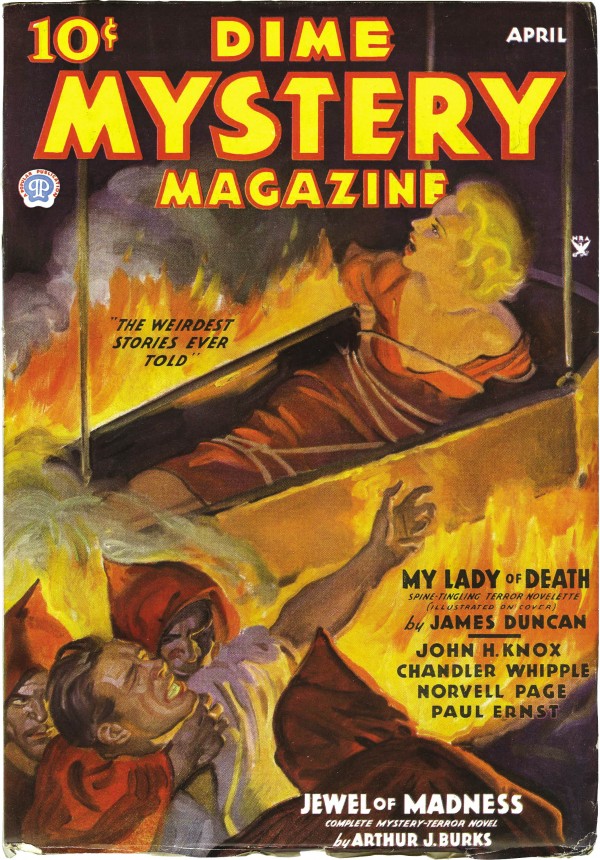
…tossed into what appears to be a flaming grave (?) on this unattributed November 1934 cover… (issue ISFDB entry here.)
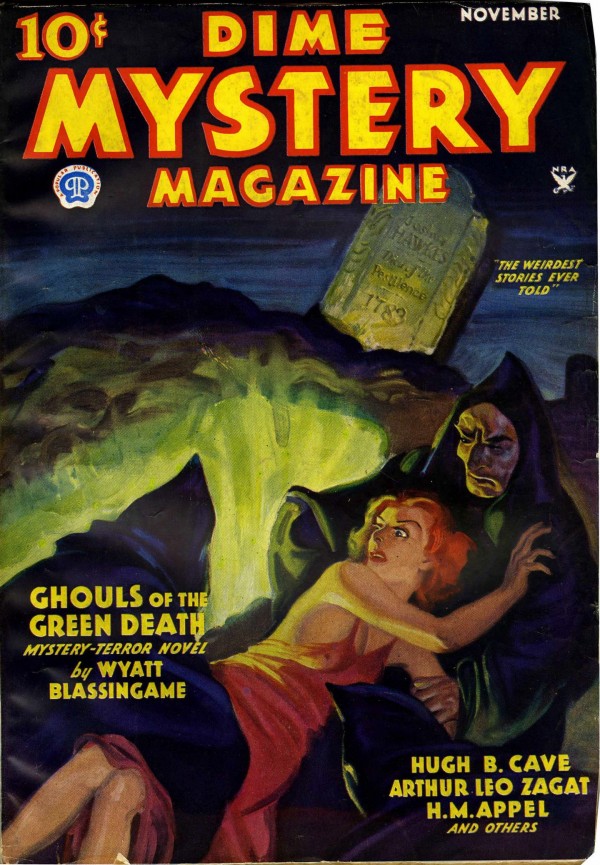
…or hurled into a volcano while your would be rescuer/hero guy apparently gets distracted by a piece of hardware as on this September 1934 cover (issue ISFDB entry here.)
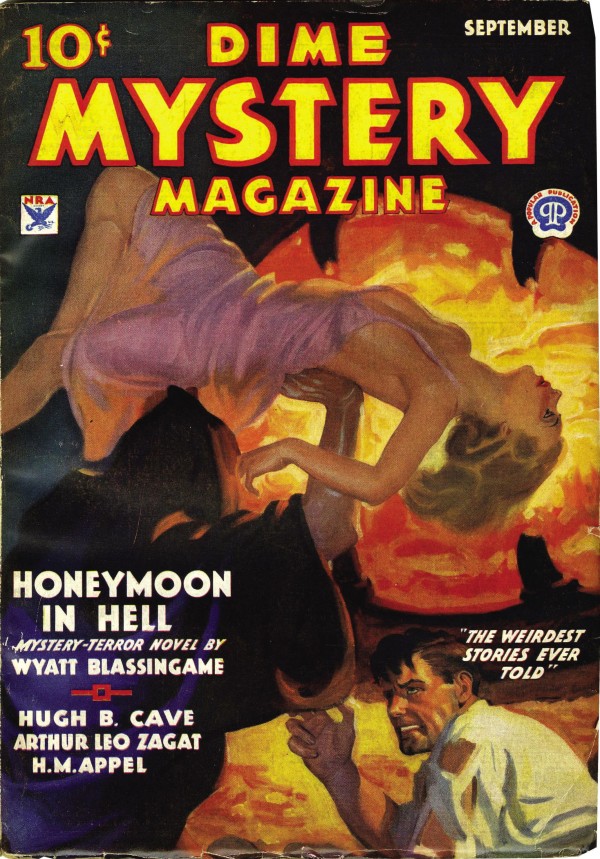
In some instances, the villain might even enter the flames with you, albeit hardly on equal terms. This villain is managing to carry his blonde victim over a brick furnace threshold and shoot the hero at the same time, all the while wearing what looks like a really bulky fireproof suit. The cover is from July 1939 and lacks an ISFDB entry.

Serious points for dexterity, if not for ethics.

